Project Management is ubiquitous in every design and manufacturing organisation. After all, time is critical in the delivery of services (design) or products (manufacture). With this in mind it’s strange that time is rarely managed with anything more than the most rudimentary of tools.
While some companies are content to use Excel spreadsheets for project management, there are more intelligent tools available to assist with the process. Microsoft Project is hugely popular amongst our readership, but its desktop/client-based approach does not allow the distribution of vital data to a much wider audience. Microsoft’s Project server technology solves this problem, but some believe this solution is too complex to be truly usable by the small to medium size enterprise.
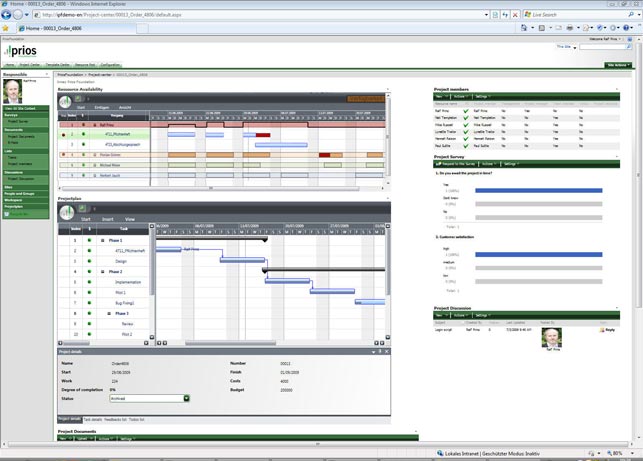
Team members can give task feedback, either in terms of a degree of completion or working hours, and also work on project discussions
Into this fray comes Inneo, a company that’s been in the world of design technology for the last 25 years, reselling both CoCreate and PTC products in Germany. Inneo has had a range of in-house developed Project Management tools for sometime, but these have suffered from similar problems to Microsoft Project. Prios Work is an entry-level solution designed for small teams, while Prios Enterprise focuses on the large scale organisation, with little in between, until now.
Inneo has now introduced Prios Foundation, a product that sits between these two polar opposites. It takes the ease of use, simplicity and ownership ideology from the lower-end Prios Work but includes the team-based, company wide information distribution ethic from the higher-end Prios Enterprise. So let’s explore further.
The middle ground
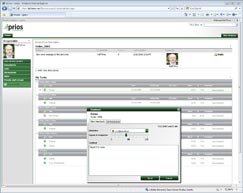
Prios Foundation is incredibly easy to use and if your company consistently faces project management delays and problems, then it’s certainly worth further investigation
There are several things to take into account when looking at Prios Foundation. The first thing to note is that the system has been developed specifically with ease-of-use in mind, both in terms of initial set-up and administration, but also in terms of how the user interacts with the system. This is project management like you’ve never seen before.
Inneo has expended a lot of effort on making the system very slick indeed and has done this in a Web browser interface. Dialogs have life to them and the way data is presented is clear, fresh and dynamic. This is exemplified by the turntable UI for selecting common tasks when first loaded up, the way dates are selected, and the way it slides between panes when in use.
While these might seem like small things, when trying to implement a system such as this, it’s not only the buy in of the management team that’s essential for its success, but also that of the users. If it’s easy to use in a dynamic modern environment, then it stands a much better chance of being used.

Resources can be entered into Prios Foundation by role and function
The second important thing to note about Prios Foundation is the fact that it’s built on top of Microsoft’s SharePoint platform. The use of this technology has been growing in the field of design and engineering over the past few years, particularly in terms of Product Data Management (PDM).
Siemens has used SharePoint as the backbone for its Insight product for some time, PTC also entered the market with ProductPoint earlier this year and there are sure to be more to come.
The benefit of using SharePoint as a platform is that many organisations running a Microsoft Server-based IT infrastructure already have it licensed and ready to use. Prios Foundation takes the generic document and collaboration tools in SharePoint and adds to them its Project Management capabilities.
Installation of Prios Foundation is easy and is said to be around the three-day mark including set-up and training. However, the really nice thing is how easy it is to maintain and customise.
As with all good software, it’s template-driven, allowing companies to formalise standard phases and sub-phases within a typical project, then adapt them to each case and roll them out. This is key to getting up and running with projects quickly.
Template design
To create a new Project Template, the first stage is simply a case of defining a series of fields by name and description.
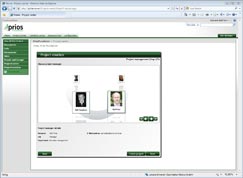
The project creation process step – a project manager is selected
Next up the project team needs to be defined and responsibilities assigned. Here the SharePoint/Windows Server-based nature of the system pays great dividends as these will have typically been defined at a root level of security, so names simply need to be picked from a Window Server user lists added to the project – the system handles the rest in terms of security and access.
Once all of this is done, the next stage is to get into the meat of the task with the definition of the various phases and sub-stages. These are done using a combination of text input and the Gannt chart type interface that’ll be familiar to almost everyone in design or engineering.
Despite the fact that this is running inside a web-browser, everything is dynamic and elements are dragged and dropped into a sequential timeline. Within the Gannt chart dependencies can then be set, milestones placed and responsibilities assigned to each task.
This means everyone has a good solid idea of both where their own responsibilities lie and those of others. Folder and document structures can also be added for essential data required by everyone in the team. That’s pretty much it for project set-up.
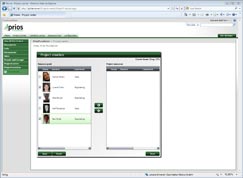
The project creation process step – team members are chosen
Once deployed, team members are all given access to the project, receive notifications and at any point, can log-into the system to see what stage the project is at.
One essential thing required to keep project plans up to date is the ability for user to add feedback. Stage feedback, in terms of comments and an estimation of stage completeness, can be added when needed, again using a very simple dialog.
By the same token, those tasked with a higher-level view of the project can quickly gain an understanding of how a project is progressing, find where things have slipped or where bottlenecks are occurring and take action to solve them – by diverting or re-assigning resources as required.
Extending with Web Parts
One of the most interesting benefits of working on top of SharePoint is that there is a rapidly growing marketplace for extensions to the platform. For Prios Foundation this means the ability to connect or add additional functionality. There are standardised extensions for SharePoint for things such as discussions, surveys, and wiki and in SharePoint speak these are referred to as Web Parts.
Of course, for those using an application like ProductPoint from PTC, the interfaces between the two can be integrated, so data can be accessed from the same user interface and swapped between the two environments.
Conclusion
Prios Foundation is a deceptively simple solution to a very complex problem. It accomplishes this by placing an emphasis on making the UI very easy to use and highly engaging, which is always going to help when promoting what many consider a dry subject.
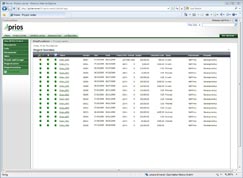
A list of projects can be individually filtered, grouped, or selected
Project management, particularly within smaller organisations, is a time consuming task and something that is often handled alongside other duties. By providing a digital environment that’s connected to all team members, there’s much to gained from greater distribution of information, of automatic notification, of providing everyone with a good idea of how a project is structured, what needs to be done, by whom and by when.
The fact that it’s based on a solid platform that most organisations already have, makes it even more accessible.
In terms of cost, the system is a shade under £7,000 for a five-seat installation. This includes first year maintenance and gets cheaper per license as user numbers are increased.
When put in the context of design, managing workflow and helping things move more efficiently is an essential part of the product development process. After all, through careful organisation and monitoring, bottlenecks can be removed and projects can be delivered more quickly.
In summary, Prios Foundation is incredibly easy to use and if your company consistently faces project management delays and problems, then it’s certainly worth further investigation.
| Product | Prios Foundation |
|---|---|
| Company name | Inneo |
| Price | from £6,820 (five licenses) |






